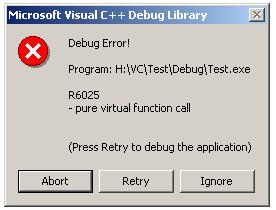Faultrep.dll Error Fix – How To Fix Faultrep.dll Errors
“Faultrep.dll” is a “dynamic link library” file belonging to the Windows subsystem. Windows uses the DLL file in the function of the error report system that Windows uses when an error occurs. A fault in the “Faultrep.dll” file could cause various warnings to appear and Windows will not function correctly until you resolve this error properly.
The typical errors this file shows include:
- “Faultrep.dll file not found”
- “File Fautrep.dll is missing”
- “Cannot find faultrep.dll”
What Causes faultrep.dll Errors?
The Faultrep.dll errors generally show when you turn on or shut down your PC. They are annoying more than damaging, but it is always wise to amend the error to prevent any long lasting damage to your PC. These errors are usually caused by the deletion or corruption of the faultrep.dll file.
As Windows requires to use the file to help it run, it’s continually over-using it, causing your system to become confused and ends up damaging the file – which causes the errors to show. The error you’re seeing can usually be fixed by copying a new file over the old one, or it could be that you have registry problems that need fixing.
How To Fix The faultrep.dll Error
Step 1 – Reinstall Application Giving The Error
If you are receiving this error when you try and use a certain application, you should reinstall the program. Again, this may or may not have the desired result on your PC because faultrep.dll is an essential file that Windows requires to run… and not many programs would actively overwrite it. However, there is no harm in trying to reinstall a program that’s causing the error:
- Click “Start” > Control Panel > Add / Remove Programs
- Locate the program causing the error
- Click “Uninstall” next to it
- Restart your PC
- Insert the installation disc for the software and install a fresh copy
- Test the program to see if the error appears
If this does not fix the issue, proceed to Step 2:
Step 2 – Manually Replace faultrep.dll On Your System
Replacing the faultrep.dll file is probably the surest way to get your system running as smoothly as possible again. You can do this very easily by following the guide below:
1) Download faultrep.dll from our server
2) Unzip the faultrep.dll file onto your computer’s hard drive
3) Browse to c:\Windows\System32
4) Locate the current faultrep.dll on your system
5) Rename the current faultrep.dll to faultrepBACKUP.dll
6) Copy & paste the new faultrep.dll into C:\Windows\System32
7) Click Start > Run (Or search”run” on Vista & Win7)
8 ) Type “cmd” in the box that appears
9) Type “regsvr32 faultrep.dll” on the black screen
10) Press enter
This will replace the faultrep.dll file on your PC with a fresh, new copy that your PC should be able to access again. However, if this does not solve the error, you may wish to try using Steps 3 and 4 below:
Step 3 – Clean Out Viruses
Antivirus programs are software tools which scan through your PC and remove any of the viruses or malware infections that are on your system. It’s often the case that viruses will infect various DLL files on your computer and then cause them to be unreadable to your PC. To ensure this is not happening on your computer, you should try using an antivirus program to scan through your system and remove any of the infections that cause all these errors. You can download our recommended antivirus program from the link above, but there are a large variety of programs available.
Step 4 – Clean Out The Registry
Another big cause of the faultrep.dll errors is the registry database of Windows. The “registry” is a central database which stores all the settings, information and options for your computer, and is where Windows keeps many vital settings that it requires to run. It’s often the case that a lot of registry settings become damaged and corrupted, leading your PC to take longer to run, making it run slower and with a lot of errors. To fix this problem, you should use a ‘registry cleaner’ to scan through your PC and fix any of the damaged or corrupt settings that are inside it. You can see our recommended registry cleaner below:


